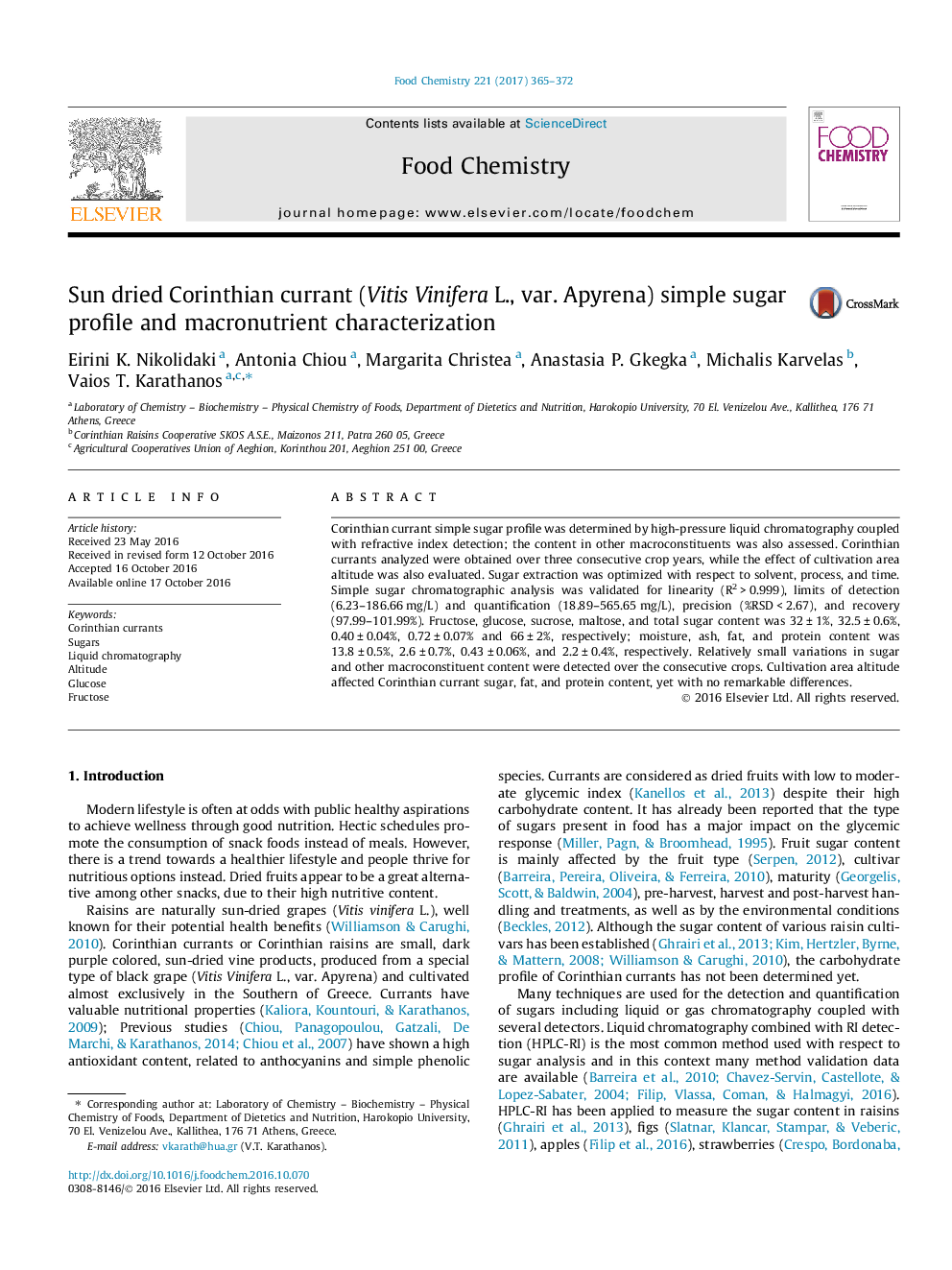| Article ID | Journal | Published Year | Pages | File Type |
|---|---|---|---|---|
| 5133747 | Food Chemistry | 2017 | 8 Pages |
â¢Corinthian currant macroconstituents were evaluated over three years.â¢An HPLC-RI method for sugar analysis was developed and validated.â¢Sugar extraction was optimized with respect to solvent, method, and time.â¢Simple sugar content was evaluated over three years.â¢Cultivation area altitude effect on sugars and macroconstituents was assessed.
Corinthian currant simple sugar profile was determined by high-pressure liquid chromatography coupled with refractive index detection; the content in other macroconstituents was also assessed. Corinthian currants analyzed were obtained over three consecutive crop years, while the effect of cultivation area altitude was also evaluated. Sugar extraction was optimized with respect to solvent, process, and time. Simple sugar chromatographic analysis was validated for linearity (R2 > 0.999), limits of detection (6.23-186.66 mg/L) and quantification (18.89-565.65 mg/L), precision (%RSD < 2.67), and recovery (97.99-101.99%). Fructose, glucose, sucrose, maltose, and total sugar content was 32 ± 1%, 32.5 ± 0.6%, 0.40 ± 0.04%, 0.72 ± 0.07% and 66 ± 2%, respectively; moisture, ash, fat, and protein content was 13.8 ± 0.5%, 2.6 ± 0.7%, 0.43 ± 0.06%, and 2.2 ± 0.4%, respectively. Relatively small variations in sugar and other macroconstituent content were detected over the consecutive crops. Cultivation area altitude affected Corinthian currant sugar, fat, and protein content, yet with no remarkable differences.
